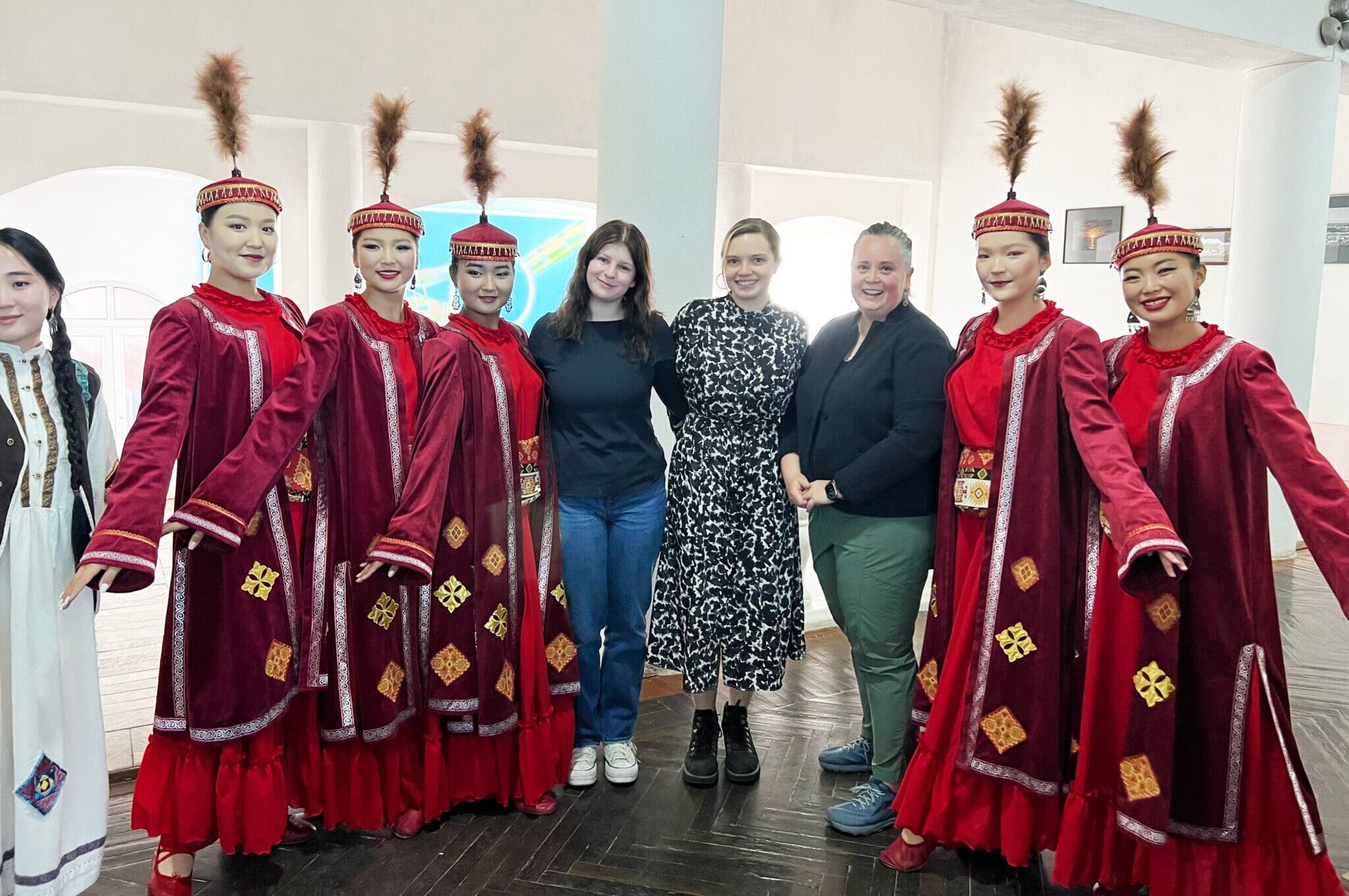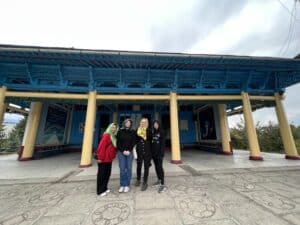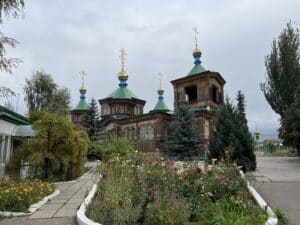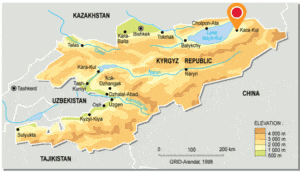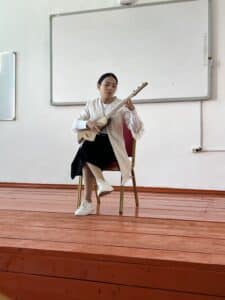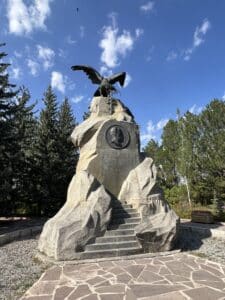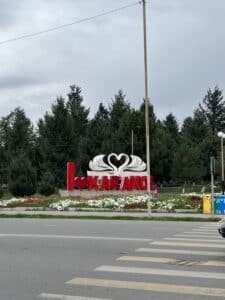Caroline Southworth is studying diplomacy at Gustavus Adolphus College in
Minnesota. She had the opportunity to serve as a student ambassador in a program run by the US embassy in Bishkek, Kyrgyzstan while studying abroad on SRAS’ Central Asian Studies Program. As a student ambassador, she visited the K. Tynystanov Issyk-Kul State University in Karakol. Below, she recounts the experience she had. Caroline was one of eight SRAS students to participate in the program in the fall of 2023.
I was connected to the opportunity to participate in the Connect USA! University Partnership Program by my local SRAS director, who passed along the program’s request for potential volunteers.
About a week after I expressed my interest in the program to the embassy, I was informed that I was accepted and would be going to Karakol with Nina, another student from the Central Asian Studies program. On Friday, September 15th, we got into a taxi and began the six-hour drive to Karakol from Bishkek. One of the best ways to practice your language skills is with taxi drivers, because they are always curious about why two young Americans are in Bishkek and how we are enjoying our stay.
Along the way, we got hungry and stopped for manti on the advice of our driver. The place we stopped at was Balykchy, a mid-sized town about halfway between Bishkek and Karakol. Thus, we got to try the meat-and-onion-filled Central Asian dumplings near the shores of the western tip of beautiful Lake Issyk-Kul.
We arrived in Karakol at around 2 pm and checked into our hotel. Professors from the K. Tynystanov Issyk-Kul State University English department and their local students met us there. Once we got settled, the students gave us a tour of Karakol and showed us the local sights. Karakol is on the eastern tip of Issyk-Kul and sits at the base of the Tien Shan mountains, which help form the border between China and Kyrgyzstan. Karakol is a gateway to nature and many tourists travel there to go on horseback treks and hikes in the summer and go downhill skiing at the nearby ski resort in the winter. One of our student hosts works as a tour guide in the summer to further practice his English.
The students took us to American Corner in the local library, an organization run by the US Embassy that offers English language courses for students and hosts an English conversation club. In Karakol, students start learning English in the 3rd grade, and we had many young people say “Hi” to us as we walked around the city speaking English with our hosts.
We were then guided to a mosque and Orthodox church, both of which are very old and made of wood without screws or nails. The Dungan Mosque supposedly has a dragon head on it, and the body of the dragon is rumored to be somewhere in China. Both the mosque and church are currently in service as religious centers, but under the officially atheist Soviet Union, the two buildings were used as a storehouse and a dance hall. Lastly, we visited a local handicraft store, where we tried the local honeys and jams, both of which are staples used for tea.
On our second day, we shared presentations on our home institutions. I attend Gustavus Adolphus College in St. Peter, Minnesota, so I talked about what life is like at a small liberal arts college. Students were especially curious about how student athletes handle their athletic and academic schedules. I enjoyed talking with students about how clubs and extracurricular activities work in the US and about the differences in the pros and cons of college degrees. Later, the university students put on a performance of dances and songs, both traditional and modern. Seeing the different dances and instruments, like the komuz, a stringed instrument, was fascinating. Many Kyrgyz instruments are small and lightweight because they were used by people with a nomadic lifestyle. To end our second day, we visited the Przhevalsky Museum and Park. Przhelevski was a Russian explorer and geographer who completed several mapping and exploration expeditions in Central Asia. He loved the Issyk-Kul region so much that he requested that he be buried there. You can see his gravestone and the memorial dedicated to him in the park and in the museum you can see his notes, some of his personal items, and a lot of taxidermied native animals.
Just before we left to go back to Bishkek, we were able to try ashlan-fu, a Dungan dish of hand-pulled noodles in a cold broth. The Dungans, who refer to themselves as Hui, are Turkic-speaking Muslims who are descendants of Chinese Hui tribes. They are an ethnic minority today spread between Kyrgyzstan and China. Ashlan-fu is particularly famous in Karakol, and people travel from all over to try it. They say that the water of Karakol is what makes the dish taste so good, and people from Bishkek will actually import the noodles and water from Karakol to make the dish. It was amazing and an apt testament to the ethnic diversity of Kyrgyzstan. Ashlan-fu was a great snack to have before our six-hour taxi ride back to Bishkek on Sunday, September 17th.
I am extremely grateful for the wonderful staff at Connect USA! University Partnership Program and at the Issyk-Kul State University, who facilitated the trip and gave me some wonderful memories.

